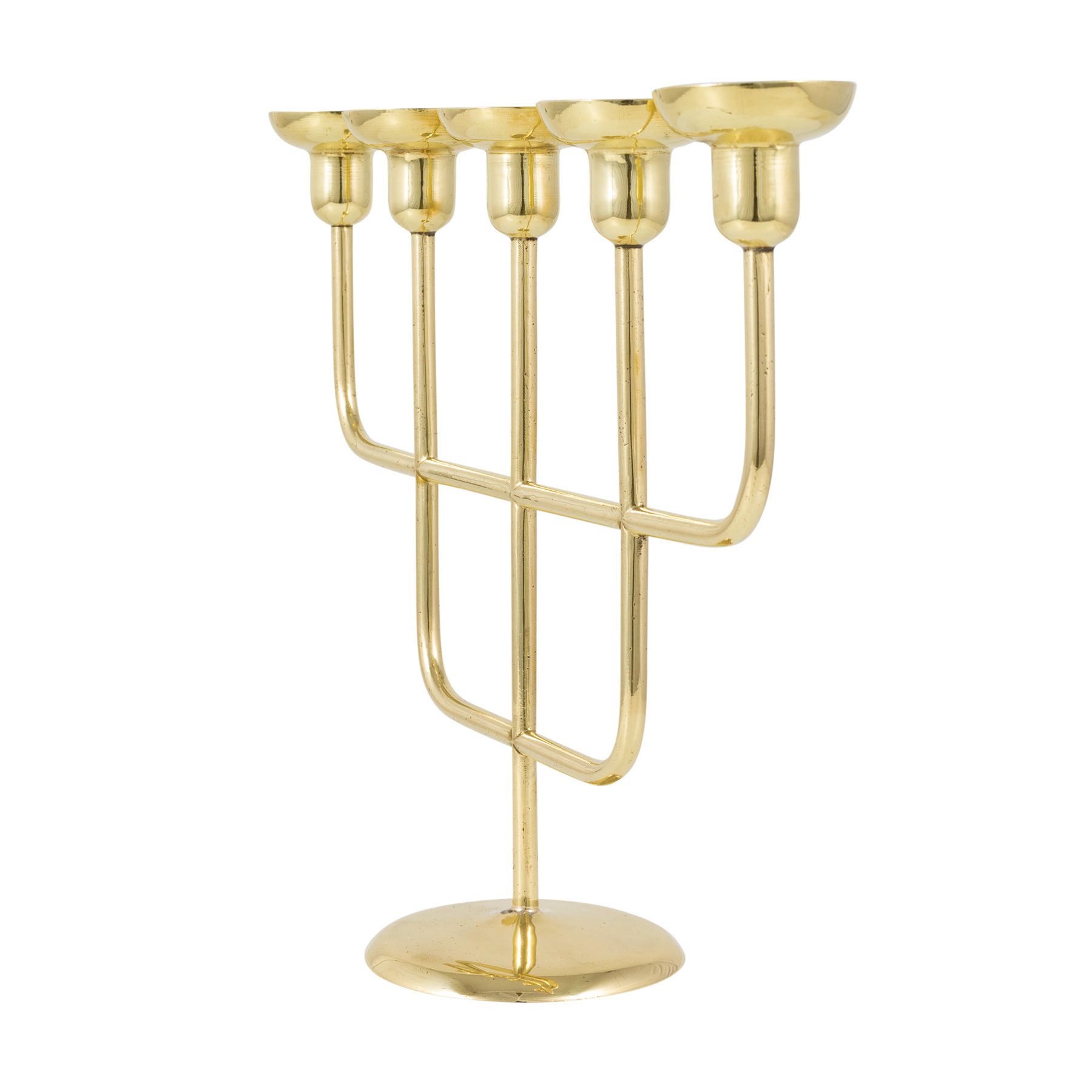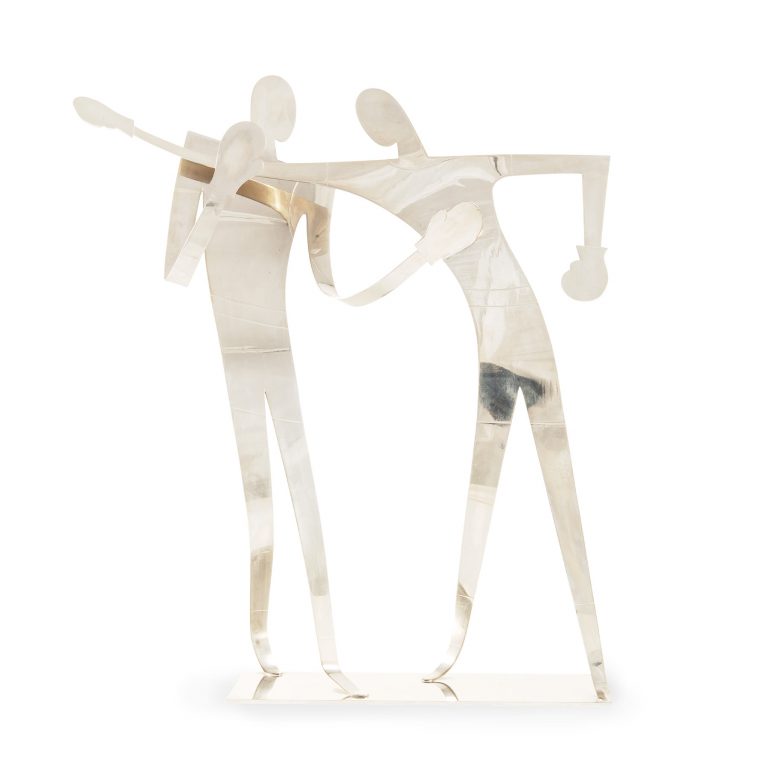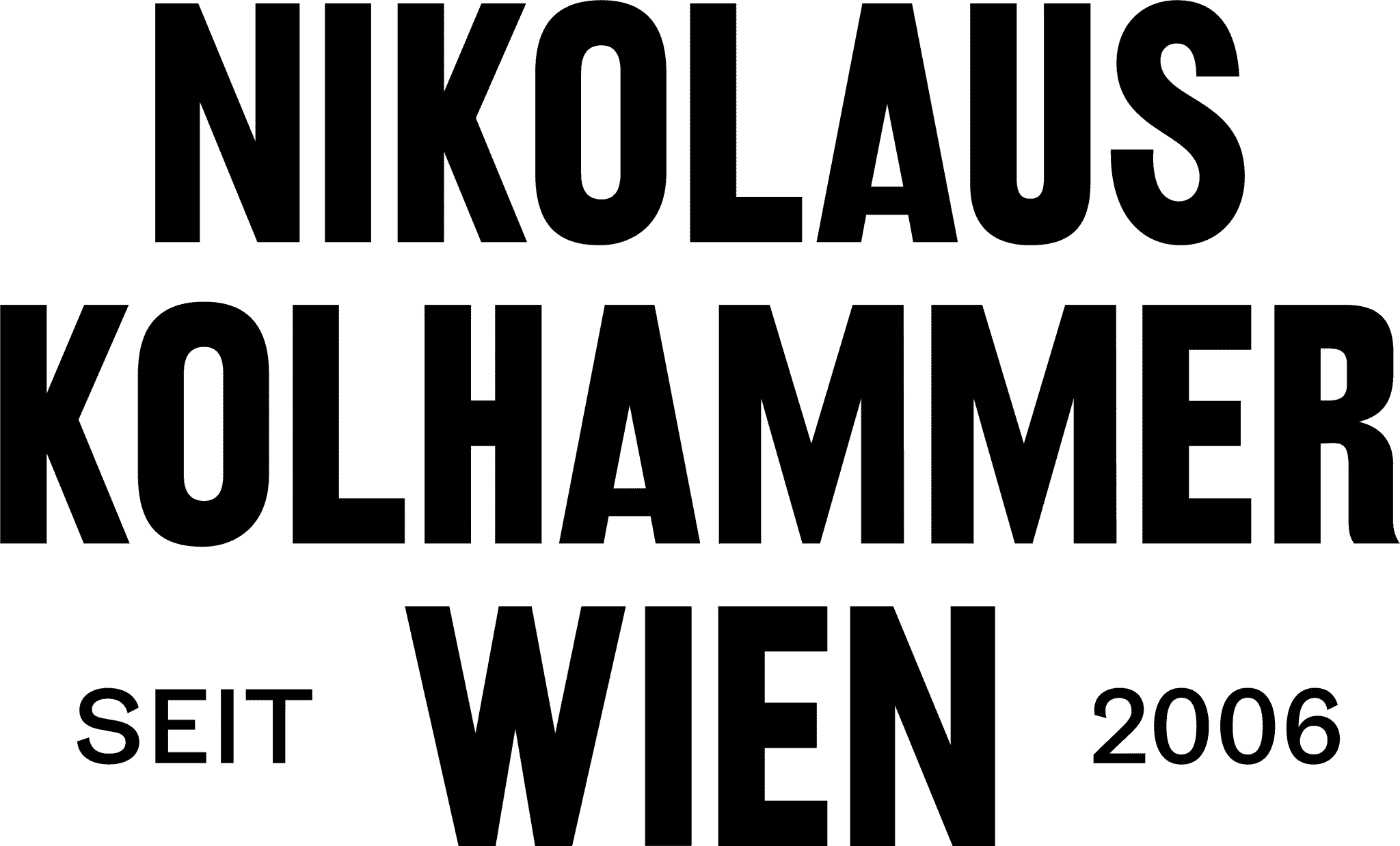Candelabrum Karl Hagenauer ca. 1940
Five flame candelabrum mod. no. 4731, design Karl Hagenauer, manufactured by Werkstatte Hagenauer Vienna, circa 1938, brass polished, marked
marked with “wHw” in the circle, “MADE IN/VIENNA/AUSTRIA”, “HAGENAUER/WIEN” bib.: documented photograph, showroom Werkstatte Hagenauer Salzburg 1940, in the Hagenauer Archive at MAK, Vienna, inv. no. HAF 286; comp. documented photograph in the Hagenauer Archive at MAK,Vienna, mod.no. 4731, inv. no. HAF 284
Description
If one didn’t know better, this candelabrum from the Werkstatte Hagenauer could also be regarded as a mid-century Scandinavian design because of its unadorned, modern shape.
In a photograph from 1940, the five-flame candleholder is depicted in the Salzburg showroom of Werkstatte Hagenauer alongside with a wooden toy horse and a lidded box. Karl Hagenauer probably designed the candelabrum in the late 1930s. Reduction as one of the defining stylistic features of Werkstatte Hagenauer is already clearly recognizable in this object, coupled with superb workmanship as can be seen in the perfectly soldered arms.
Beautifully shaped utilitarian objects like this one can be easily embedded in the modern, European design tradition and show that the two masterminds Karl and Franz Hagenauer had their finger on the pulse of the times.
Artist
Karl Hagenauer (1898 – 1956) was an Austrian metal artist and designer who, together with his brother Franz, ran the Werkstatte Hagenauer Wien. Together they wrote Austrian design history with their utility and decorative objects made of metal and wood. In the metalworking business of his father Carl (1872-1928), Karl Hagenauer had the opportunity to learn the artisan side of the girdler's trade at an early age. He received his training at the Vienna School of Arts and Crafts under Franz Cizek, Oskar Strnad and Josef Hoffmann. Interrupted by his military service in World War I, he finished his studies in 1920. Following Josef Hoffmann's initiative, he then provided designs for the Wiener Werkstatte. Especially in this early phase, the influence of his teachers, in particular the ornamental and playful form language of Dagobert Peche is clearly distinguishable. Soon a stylistic change became apparent in Karl Hagenauer's work: pure ornamentation was pushed into the background, reduced forms became more dominant. Especially in the figural segment, he now developed his own distinctive style with altered proportions and elongated limbs. He also gave preference to less noble metals such as brass, alpaca and copper over the materials he had previously used, such as silver and ivory. What did not change, however, was the high quality of the objects' craftsmanship. Fine examples of this are his designs for lamp stands in the form of highly stylized female nudes or the well-known dancer figurine of Josephine Baker from the late 1920s*. The Hagenauer workshop also successfully marketed exotic African dancer statuettes as well as whimsical animal figures made of wood. Due to the economic conditions of the interwar period and the Second World War, the Hagenauer workshop at times produced mainly simple but nevertheless high-quality utilitarian or decorative objects made of metal or wood. The authorship of many of these designs can no longer be attributed to either Karl or Franz Hagenauer specifically. Karl Hagenauer died in 1956 and subsequently Franz Hagenauer continued to run the workshop until the 1980s. * cf. Olga Kronsteiner, Monika Wenzl-Bachmeier (ed.), Hagenauer – Viennese Modernism and New Realism, exhibition catalogue Wagner:Werk Postsparkasse, Vienna 2011, p. 38 and p. 67
Execution
Wiener Werkstatte 1903 - 1932 The Wiener Werkstatte was a production community founded on the model of the Arts and Crafts movement, which aimed to provide a platform for artistically designed and high quality crafts. Or, as G. Fahr-Becker puts it "...it was a workshop that gathered many, a work of art as the result of all the arts." Founded in 1903 by Josef Hoffmann, Koloman Moser and industrialist Fritz Waerndorfer, the Wiener Werkstatte (WW) initially produced and distributed only metal objects. The range was subsequently rapidly expanded to include furniture, furnishings, textiles, jewellery, accessories made of ceramics and glass, leather, etc. The wide range of products was sold in the company's own business premises in Vienna and, for a time, also in branches in Zurich and New York. The founding fathers and artistic directors J. Hoffmann and K. Moser originally pursued the ideal of artistic penetration of all areas of life in the sense of the Gesamtkunstwerk (total work of art). This radical aspiration could only be realized in a few projects, which were commissioned primarily by upper-class patrons. Impressive examples of this are the Palais Stoclet in Brussels or the Villa Skywa-Primavesi in Vienna. In its early years, the company was still committed to a strict geometric style, but this functionalism was soon expanded to include more pleasing forms. As a representative of a more decorative line, we should mention Dagobert Peche, who with his playful, imaginative ornamentation contributed designs for all divisions of WW. An important creative contribution, especially in the decorative sections of the WW, was made by the female artists from around 1915. The best known would probably be the ceramic artists Vally Wieselthier and Gudrun Baudisch. The significance of many of these female designers has only been duly appreciated in recent years*. The increasingly difficult economic environment after World War I led to the liquidation of the WW in 1932. Gabriele Fahr-Becker writes: "The financial difficulties which the Wiener Werkstatte had to face during its existence were not primarily the result of economic ignorance, but were based on the fact that the broad public could not be reached as buyers" (G. Fahr-Becker, Wiener Werkstätte, Taschen 1994, p. 12). Beyond the relatively short period of its existence, the Wiener Werkstatte exerted a lasting influence. Arts and crafts as well as applied arts were decisively revalued and a whole generation of architects, artists and designers were influenced by the artistic will of their founding fathers. *Bib.: C. Thun-Hohenstein, A.-K. Rossberg, E. Schmuttermeier (ed.), Die Frauen der Wiener Werkstatte (The Women of the Wiener Werkstatte), exhibition catalog Museum of Applied Arts Vienna, Wien 2020
Inquiry
By submitting the inquiry form, you agree to the use of your data for this inquiry. Privacy Policy


















